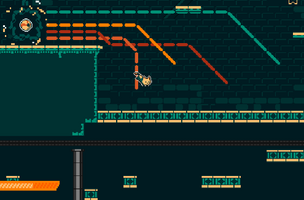[Game Design] Say It Without Words


In game development, especially in the indie scene, we often face a fascinating challenge: communicating with players without using language. It’s about conveying game rules and evoking emotions solely through graphics, sound, and level design, without relying on text or voiceovers.
Recently, while polishing my platformer project, 'Glide', I found myself grappling with a specific question. In a game devoid of language, how can I more clearly convey my intentions to the player? At the end of this contemplation, I discovered an interesting paradox, which I'd like to share: the power of 'constraints'.
1. When Words Fail, Simplify the Rules
We often feel frustrated when we don't share a common language with someone or have to rely solely on body language. However, did you know that in such situations, setting 'clear constraints' can actually facilitate better communication?
For instance, if you establish the rule, "From now on, let's only use hand gestures to talk about 'eating'," then even ambiguous gestures can be much more easily interpreted as 'hungry' or 'delicious'. By drastically reducing the myriad of possibilities, you ensure that both parties are standing on the same contextual ground. This acts as a powerful 'protocol' that reduces uncertainty and eases cognitive load.
2. Applying It to Game Design: Freedom vs. Constraints
I applied this principle to a core mechanic of my game: the 'Double Jump'.
- A. Free Double Jump (Original): Players can double jump whenever they want. While it offers freedom, when faced with a high cliff, it's hard to be certain if this is a path to take now or one to return to later. The developer's intention becomes ambiguous.
- B. Constrained Double Jump (Revised): A double jump is only available as a one-time use after collecting a specific item. This might seem like a frustrating restriction to the player, but paradoxically, this item sends a very clear message: "Here is a key (the item). It means there's a door (a high cliff) nearby that this can open."
Without a single line of text, the mere existence of the item acts as a signpost, presenting a short-term goal and guiding the player.
3. Another Gift of Constraints: Elevating the Value of 'Rewards'
Constraints help rediscover the value of mechanics. An 'always-available double jump' is like air; it's easy to take its importance for granted. But what if, the moment you acquire the item, your character glows, and a crisp sound effect plays, giving feedback that you've 'temporarily gained a special ability'?
Players will perceive the moment this constraint is lifted as a definite 'reward'. And when they use that precious opportunity to overcome an obstacle, they will feel a much greater sense of accomplishment—a true 'Eureka!' moment.
4. A Caveat: Avoiding Frustration
Of course, constraints have their downsides. If not handled carefully, they can just feel like plain 'inconvenience' to the player. To prevent this, meticulous non-verbal communication devices are needed.
- Visual Feedback: When the ability is active, the current state must be intuitively shown, perhaps by having the character's scarf grow longer or their body emit a glow.
- Kind Level Design: The frustration of failing a jump must be minimized. The item should respawn quickly, or the level should be structured for easy retries to prevent a 'break down in communication'.
Conclusion
'Constraints' might not be a prison that confines the player, but perhaps the most certain 'common language' promised between the developer and the player to communicate without misunderstanding. In a world without words, what constraints will you use to speak to your players? I'm off to design that silent conversation again today.
Files
GLIDE
Exploration, puzzles, jumping
| Status | In development |
| Author | bruteforceattack |
| Genre | Platformer |
| Tags | Metroidvania |
| Languages | English |
| Accessibility | Textless |
Leave a comment
Log in with itch.io to leave a comment.